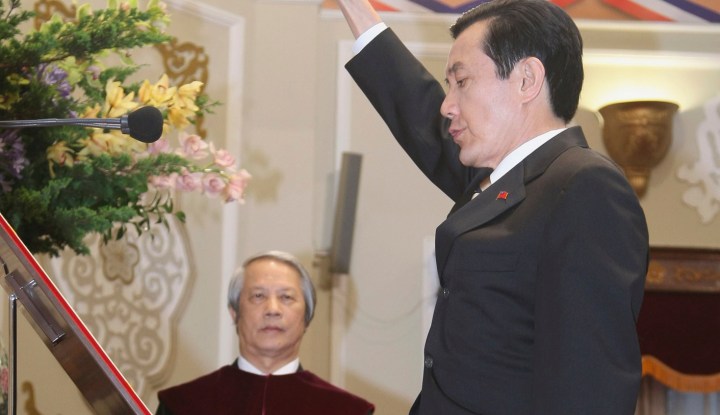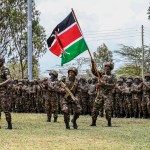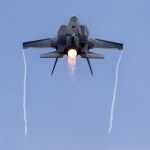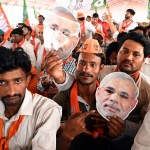Newsdeck
Taiwan:Unification hint flagged at Ma’s speech

More than a week since Taiwanese President Ma Ying-jeou was sworn into his second and final term, and Beijing still hasn't responded with anything other than a stony silence. By Jens Kastner
The Chinese leadership is apparently frustrated because Ma did not embed a clear unification message in his inauguration speech on May 20. (See Taiwan’s Ma plays it cool, Asia Times Online, May 21, ’12). However, keen observers of Ma’s ceremony say China’s leaders missed an important detail.
According to this school of thought, in a special gesture of goodwill aimed at Beijing, Ma’s staffers decorated the ceremonial hall with a strange new flag that was a potential prototype for what might represent Taiwan after unification with mainland China.
Ma’s inauguration in the Presidential Office’s auditorium was witnessed by many dozens of dignitaries. A press conference subsequently held at the same spot was attended by hundreds.
As the audience hung onto the Taiwanese president’s words in anxious anticipation he would proclaim something along the lines of “both the mainland and Taiwan belong to China” without, as he usually does, in the same breath qualifying that this China stands for Taipei’s Republic of China (ROC) and not for Beijing’s People’s Republic of China (PRC), it seems they neglected a key visual aspect. Otherwise, the flag hanging at his side would have been spotted instantly.
It looked almost like Taiwan’s official ROC flag but not quite. While the real qing tian bai ri, mang di hong, or “Blue Sky, White Sun, and a Wholly Red Earth”, has a blue canton in the upper left corner bearing a white sun, with the rest of the flag red, the new “bizarre” flag on display at the Presidential Office’s auditorium was blue in the upper half, red in the bottom half, with an identically shaped but bigger white star stitched right in the middle.
During an official inauguration, only the official ROC flag should be displayed prominently. Yet it took observers several days to notice the different flag and start interpreting its implications.
“With the color blue in Taiwan generally associated with the pan-blue [ruling Kuomintang (KMT)] camp and the color red associated with the Chinese Communist Party’s (CCP) – the combination of colors led some to interpret the flag as symbolic of ‘Chinese Nationalist Party [KMT]-CCP cooperation’,” the Taipei Times wrote in its editorial, entitled “Bizarre banner overshadows Ma”, four days later.
“Others, reminded of the ‘one country, two areas’ idea touted by Ma, questioned whether the banner was meant to represent the ‘Taiwan area’ [as part of China].”
A “one country, two areas” slogan emerged two months prior to Ma’s inauguration after the president sent the KMT honorary chairman to Beijing. There, on Ma’s behalf, the official defined cross-strait relations as being between two areas that belong to the same state.
The Ministry of the Interior has dismissed the furor over the flag, saying it was a playful decoration. Even if Ma did invent the flag to please Beijing, it likely wouldn’t have been enough to soothe Chinese anger at his inauguration speech.
“Ma not only did not mention the Chinese stance on the ‘one China’ concept, he re-emphasized the ruling Kuomintang’s belief that the ROC is in fact the only China,” Taiwan’s China Post quoted an anonymous top national security official five days after the inauguration as saying.
“Mainland China feels like it has been tricked by the Taiwanese government.”
Strongly suggesting that this assessment is correct, Taipei has yet to receive Beijing’s response to Ma’s inauguration. In striking contrast, Chinese officials were quick to heap praise on Ma after his first swearing-in in 2008.
According to Beijing, the ROC ceased to exist on October 1, 1949, when Mao Zedong proclaimed the founding of the PRC to end a four-year civil war between the CCP and the KMT. However, the KMT had retreated to Taiwan with Generalissimo Chiang Kai-shek, and in the eyes of Taipei the ROC is alive and kicking.
Both sides have mutually denied one another’s sovereignty since, but Taipei somewhat softened this approach after Ma took office in 2008. As with China’s rise as a global trade power the facilitation of institutionalized cross-strait relations became ever more crucial for the Taiwanese economy, the Ma administration resorted to making the ROC’s national symbols, including the ROC flag, less visible.
Examples are plentiful.
When Chen Yunlin, Beijing’s top cross-strait negotiator, went to Taiwan for the first time in 2008, Ma ordered police to forcefully remove ROC flags from local demonstrators. This practice continues whenever official Chinese delegations, such as those representing China’s provinces, tour the island.
Shortly after Ma took office, Taiwan’s prestigious state-owned universities also began dropping the term “national” from their names when dealing with China in order to enable cross-strait exchanges. Some official tourism agencies have taken the “.tw” suffix from their websites for the same reason.
The Veterans Affairs Commission recently recommended that affiliated recreational farms in central Taiwan remove the names of government agencies from their titles and promotional material to avoid “offending” Chinese tourists and Beijing.
And as long ago as 1980, Beijing’s diplomatic clout enforced that the ROC Olympic team must perform under the awkward “Chinese Taipei Olympic flag”, which features the “Blue Sky” and the “White Sun”. Unlike the new flag in the Presidential Office’s auditorium it not only scaled down the “Wholly Red Earth”, but completely omitted it.
Analysts asked by Asia Times Online differed in their opinions on how significant the piece of cloth in the spotlight actually is.
Steve Tsang, director of the University of Nottingham China Policy Institute, flatly dismissed the idea that the banner is meant to symbolize KMT-CCP cooperation. He took an historic excursion to illustrate this notion.
“To imply that this is to form an equal partnership between the KMT and the CCP is way off the mark. The ‘White Sun’ on the ‘Blue Sky’ background is the symbol of the KMT. The ‘Red Earth’ was added later when the KMT gained power in the ROC,” Tsang said.
“The red is not the communist red but the ROC red. It has been there since the 1920s.”
Even so, Tsang says the flag was inappropriate for Ma’s inauguration. According to him, it was a rather naughty move of the KMT government to enlarge the “Blue Sky” – which should occupy only a corner of the flag – because it implies that the party dominates the country.
“It was in poor taste by the KMT to have allowed that. In a democratic country, no party symbol should take precedent over the national flag,” Tsang said.
Lai I-chung, a researcher with the Taiwan Thinktank, expressed more serious reservations. According to Lai, although the government has since labelled the alteration a “creatively designed version” of the ROC flag, the tinkering with Taiwan’s highest national symbol can by no means be called a bagatelle.
“There are very clear regulations regarding how the national flag should be treated in an official ceremony,” Lai said.
“If the Ma administration is willing to transform this flag in its own official swearing-in ceremony that much, then China doesn’t need to worry about Ma’s reactions the next time it shows a lack of respect to the ROC in cross-strait negotiations.” DM
(Copyright 2012 Asia Times Online (Holdings) Ltd. All rights reserved.)
Photo: Taiwan’s Nationalist Party (KMT) President-elect Ma Ying-jeou salutes as he takes his inauguration oath at the Presidential Office in Taipei May 20, 2012. Ma took office on Sunday for his second term. REUTERS/Hsu Chao-chang



















 Become an Insider
Become an Insider